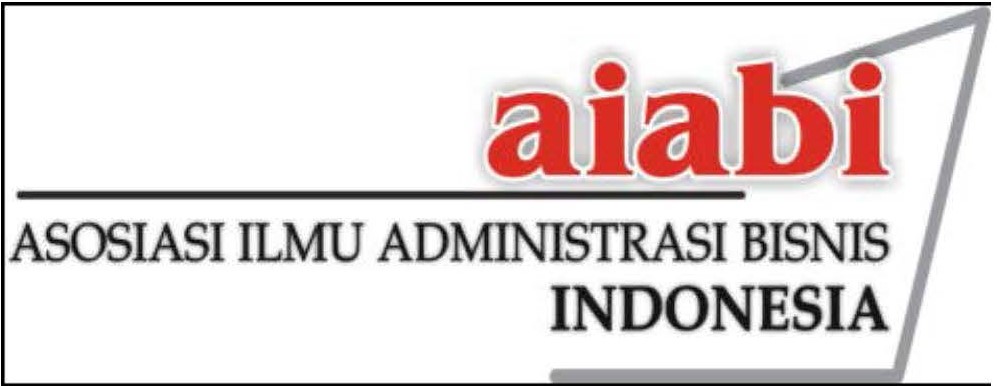ANALISIS PENGUNAAN WHATSAPP BUSINESS UNTUK MENINGKATKAN PERJUALAN DAN KEDEKATAN DENGAN PELANGGAN DI PT SAUNG ANGKLUNG UDJO
Abstrak
The use of communication platforms is beneficial for companies, one of which is the use of mobile-based applications, namely the WhatsApp Business application, to meet market demands that require easy access to information directly and quickly. The purpose of this study was to determine the increase in sales at PT Saung Angklung Ujdo after using WhatsApp Business in the implementation of the sales process. The research method used is a qualitative method with a descriptive approach. Data collection techniques are carried out by observation, interviews with the Digital Strategy Manager, and literature study of books, journals, and documents related to research discussions. The results show that there is a match between theory and practice in the sales process with the use of the WhatsApp Business application and an increase in sales after the use of the WhatsApp Business application by PT Saung Angklung Udjo.
Penggunaan platform komunikasi sangat membantu perusahaan salah satunya adalah penggunaan aplikasi berbasis mobile yaitu aplikasi WhatsApp Business untuk memenuhi tuntutan pasar yang membutuhkan kemudahan akses informasi secara langsung dan cepat. Tujuan dari penelitian ini adalah untuk mengetahui peningkatan penjualan pada PT Saung Angklung Ujdo setelah menggunakan WhatsApp Business dalam pelaksanaan proses penjualannya. Metode penelitian yang digunakan adalah metode kualitatif dengan pendekatan deskriptif. Teknik pengumpulan data dilakukan dengan observasi, wawancara dengan Manajer Strategi Digital, dan studi pustaka terhadap buku, jurnal, dan dokumen yang berkaitan dengan pembahasan penelitian. Hasil penelitian menunjukkan bahwa terdapat kesesuaian antara teori dan praktek dalam proses penjualan dengan penggunaan aplikasi WhatsApp Business dan peningkatan penjualan setelah penggunaan aplikasi WhatsApp Business yang dilakukan oleh PT Saung Angklung Udjo.
Kata Kunci
Teks Lengkap:
PDFReferensi
Afèche, P., Araghi, M., & Baron, O. (2017). Customer acquisition, retention, and service access quality: Optimal advertising, capacity level, and capacity allocation. Manufacturing and Service Operations Management. https://doi.org/10.1287/msom.2017.0635
Athapaththu, J. C., & Kulathunga, D. (2018). Factors Affecting Online Purchase Intention: Effects of Technology and Social Commerce. International Business Research. https://doi.org/10.5539/ibr.v11n10p111
Benlahbib, A., & Nfaoui, E. H. (2020). Aggregating customer review attributes for online reputation generation. IEEE Access. https://doi.org/10.1109/ACCESS.2020.2996805
BenMark, G., & Venkatachari, D. (2016). Messaging Apps Are Changing How Companies Talk with Customers. Harvard Business Review.
Blasco-Arcas, L., Hernandez-Ortega, B. I., & Jimenez-Martinez, J. (2016). Engagement platforms: The role of emotions in fostering customer engagement and brand image in interactive media. Journal of Service Theory and Practice. https://doi.org/10.1108/JSTP-12-2014-0286
Carlson, J., Rahman, M., Voola, R., & De Vries, N. (2018). Customer engagement behaviours in social media: capturing innovation opportunities. Journal of Services Marketing. https://doi.org/10.1108/JSM-02-2017-0059
Chaffey, D., & Ellis-Chadwick, F. (2019). Digital Marketing 7th Edition. In Pearson. https://doi.org/10.1017/CBO9781107415324.004
Cruz-Cárdenas, J., Guadalupe-Lanas, J., Zabelina, E., Palacio-Fierro, A., Velín-Fárez, M., & Staniewski, M. W. (2019). Consumer value creation through WhatsApp use: A qualitative multimethod approach in a Latin American scenario. Academia Revista Latinoamericana de Administracion. https://doi.org/10.1108/ARLA-02-2019-0044
Cuong, P. H. (2019). Antecedents of store management strategies and visual merchandising on the in-store engagement of consumer good buyers: An empirical study. Global Business and Finance Review. https://doi.org/10.17549/gbfr.2019.24.4.76
Faridi, M. R., & Malik, A. (2019). Customer engagement technology in SME’s in Saudi Arabia: Does it ensue in disturbance or disruption. International Journal of Entrepreneurship.
Fernandes, T., & Remelhe, P. (2016). How to engage customers in co-creation: customers’ motivations for collaborative innovation. Journal of Strategic Marketing. https://doi.org/10.1080/0965254X.2015.1095220
Floreddu, P. B., & Cabiddu, F. (2016). Social media communication strategies. Journal of Services Marketing. https://doi.org/10.1108/JSM-01-2015-0036
France, C., Merrilees, B., & Miller, D. (2016). An integrated model of customer-brand engagement: Drivers and consequences. In Journal of Brand Management. https://doi.org/10.1057/bm.2016.4
Han, T., & Keskin, F. (2016). Using a Mobile Application (WhatsApp) to Reduce EFL Speaking Anxiety. Gist: Education and Learning Research Journal.
Harmeling, C. M., Moffett, J. W., Arnold, M. J., & Carlson, B. D. (2017). Toward a theory of customer engagement marketing. Journal of the Academy of Marketing Science. https://doi.org/10.1007/s11747-016-0509-2
Harrigan, P., Evers, U., Miles, M., & Daly, T. (2017). Customer engagement with tourism social media brands. Tourism Management. https://doi.org/10.1016/j.tourman.2016.09.015
Jarratt, D., & Hadcroft, P. (2007). Market Orientation: An Iterative Process of Customer and Market Engagement. Journal of Business-to-Business Marketing. https://doi.org/10.1300/J033v14n03
Jobber, D., & Lancaster, G. (2015). Selling & Sales Management 10th Edition. In Pearson.
Kaplan, A., & Haenlein, M. (2019). Rulers of the world, unite! The challenges and opportunities of artificial intelligence. Business Horizons. https://doi.org/10.1016/j.bushor.2019.09.003
Kaplan, A. M., & Haenlein, M. (2010). Users of the world, unite! The challenges and opportunities of Social Media. Business Horizons. https://doi.org/10.1016/j.bushor.2009.09.003
Kemp, S. (2018). Digital in 2018: World’s internet users pass the 4 billion mark. Wearesocial.Com. https://wearesocial.com/blog/2018/01/global-digital-report-2018
Kotler, P., & Armstrong, G. (2018). Principle of Marketing. In Principles of Marketing.
Kumar, N., & Sharma, S. (2017). Survey Analysis on the usage and Impact of Whatsapp Messenger. Global Journal of Enterprise Information System. https://doi.org/10.18311/gjeis/2016/15741
Kumar, V., & Pansari, A. (2016). Competitive advantage through engagement. In Journal of Marketing Research. https://doi.org/10.1509/jmr.15.0044
Moliner, M. Á., Monferrer-Tirado, D., & Estrada-Guillén, M. (2018). Consequences of customer engagement and customer self-brand connection. Journal of Services Marketing. https://doi.org/10.1108/JSM-08-2016-0320
Prentice, C., Han, X. Y., Hua, L. L., & Hu, L. (2019). The influence of identity-driven customer engagement on purchase intention. Journal of Retailing and Consumer Services. https://doi.org/10.1016/j.jretconser.2018.12.014
Reynolds, P., & Lancaster, G. (2019). Consumer and organisational buyer behaviour. In Marketing Made Simple. https://doi.org/10.4324/9780080524948-3
Shah, S. H. H., Lei, S., Ali, M., Doronin, D., & Hussain, S. T. (2019). Prosumption: bibliometric analysis using HistCite and VOSviewer. Kybernetes. https://doi.org/10.1108/K-12-2018-0696
Sun, Q., & Xu, B. (2019). Mobile Social Commerce: Current State and Future Directions. Journal of Global Marketing. https://doi.org/10.1080/08911762.2019.1620902
van Heerde, H. J., Dinner, I. M., & Neslin, S. A. (2019). Engaging the unengaged customer: The value of a retailer mobile app. International Journal of Research in Marketing. https://doi.org/10.1016/j.ijresmar.2019.03.003
Vanauken, K. (2015). Using social media to improve customer engagement and promote products and services. Journal of Airport Management.
DOI: https://doi.org/10.24198/adbispreneur.v5i2.29171
Refbacks
- Saat ini tidak ada refbacks.









